Gray-Scott Model at F 0.0940, k 0.0570
These images and movie demonstrate the behavior of the Gray-Scott reaction-diffusion system with σ=Du/Dv=2 and parameters F=0.0940, k=0.0570.
Small blue spots in a red field will grow (either as worms or blobs) to fill the space; narrow parts of blobs zipper down the length of the blob to make it entirely linear (possibly with branching); the result is a field of parallel stripes.
Red spots on blue (as seen here) grow in a more complex way. The isolated circular red spots seen near the right side during the first 20 seconds are stable: smaller red spots grow, and larger ones shrink. However, when two spots come into contact, the blue line between them is stronger than open blue space, and makes the spots lengthen parallel to it. Worm tips are stronger still. After 4,000,000 tu this pattern is mostly a labyrinth of lines, with some branching and a few surviving bubble-clumps of red spots. (glossary of terms)
 increase F increase F
 | |||
  |
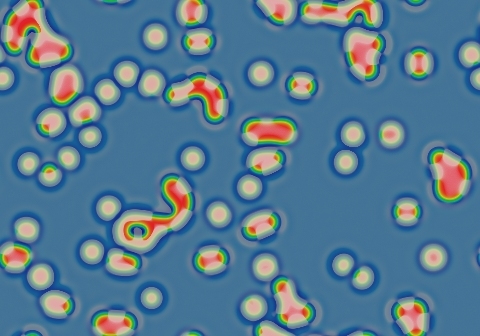
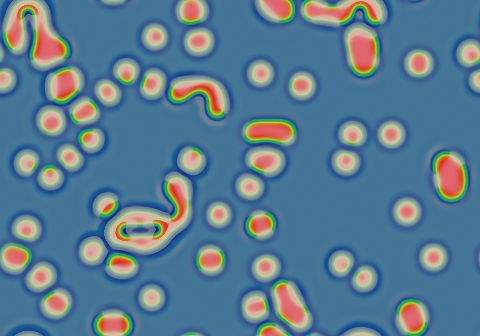
|
15 frames/sec.; each fr. is 542 iter. steps = 271 tu; 1801 fr. total (488,071 tu) |  increase k 
|
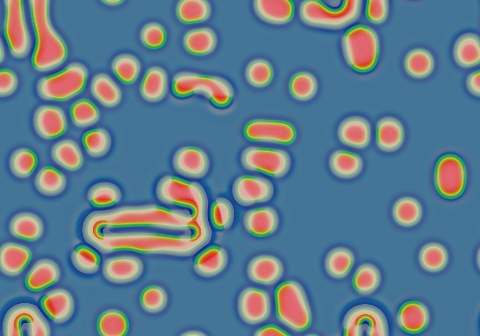
|
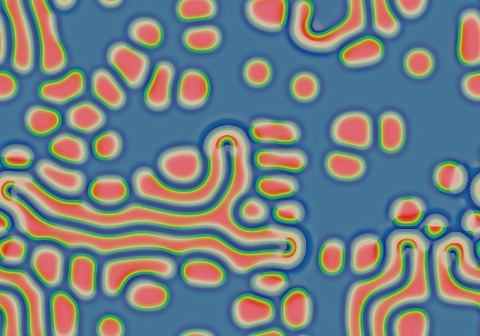
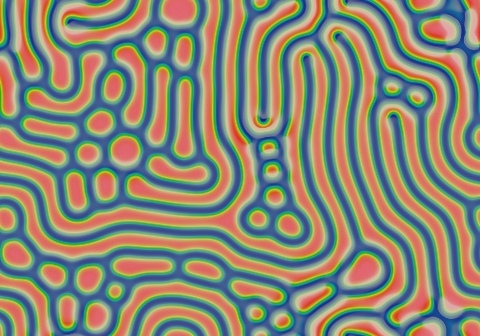
| ||
 decrease F decrease F
 |
In these images:
- Color indicates level of u, ranging from purple (lowest u values) through blue, aqua, green, yellow and pink/red (highest u values)
- Areas where u is increasing are lightened to a light pastel tone; where u is decreasing the color is vivid.
- In areas where u is changing by less than ±3×10-6 per tu, an intermediate pastel color is seen. This includes areas that are in steady state or equilibrium.
''tu'' is the dimensionless unit of time, and ''lu'' the dimensionless unit of length, implicit in the equations that define the reaction-diffusion model. The grids for these simulations use Δx=1/143 lu and Δt=1/2 tu; the system is 3.2 lu wide. The simulation meets itself at the edges (periodic boundary condition); all images tile seamlessly if used as wallpaper.
Go back to Gray-Scott pattern index
This page was written in the "embarrassingly readable" markup language RHTF, and was last updated on 2019 Jan 05.
 s.11
s.11